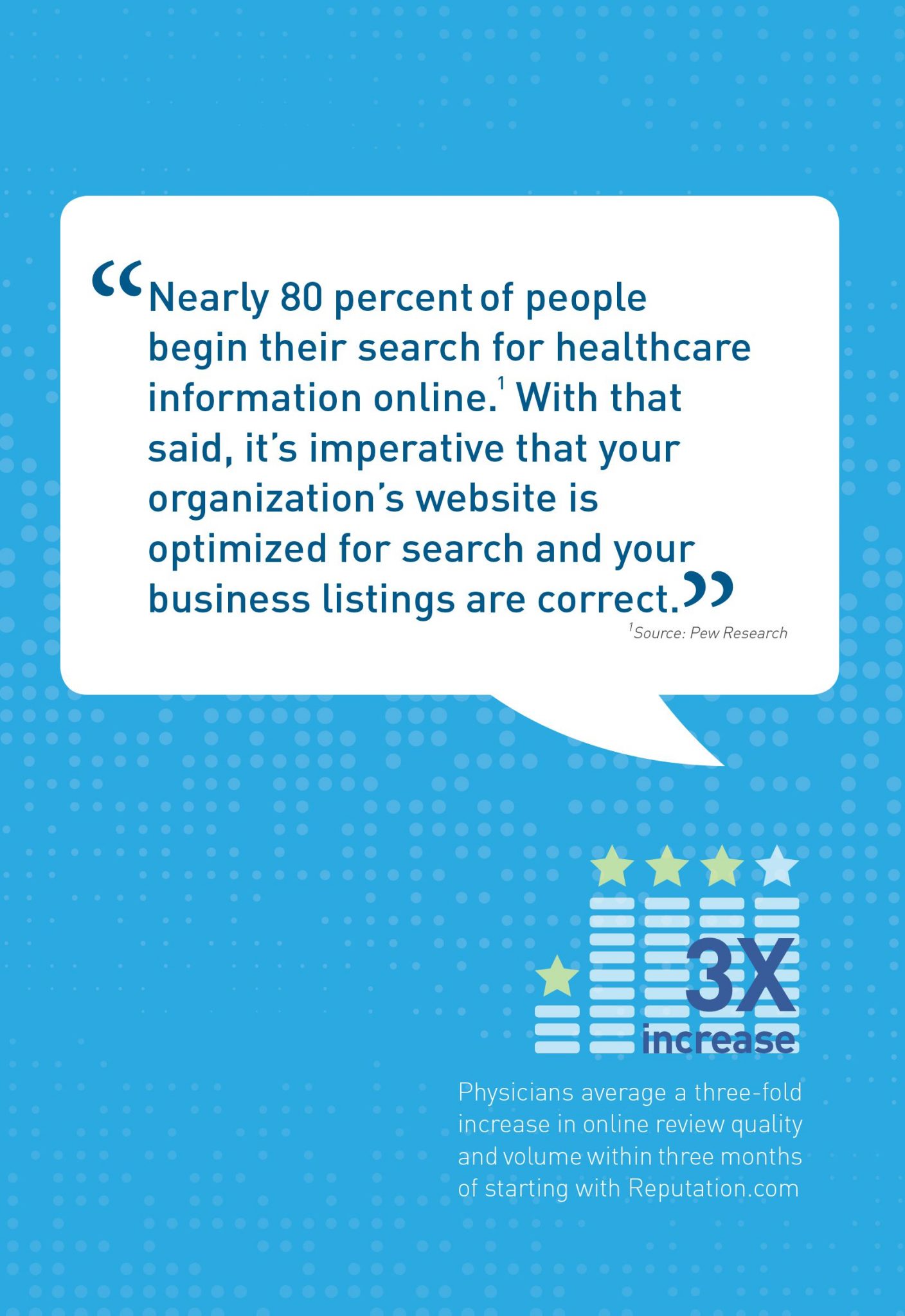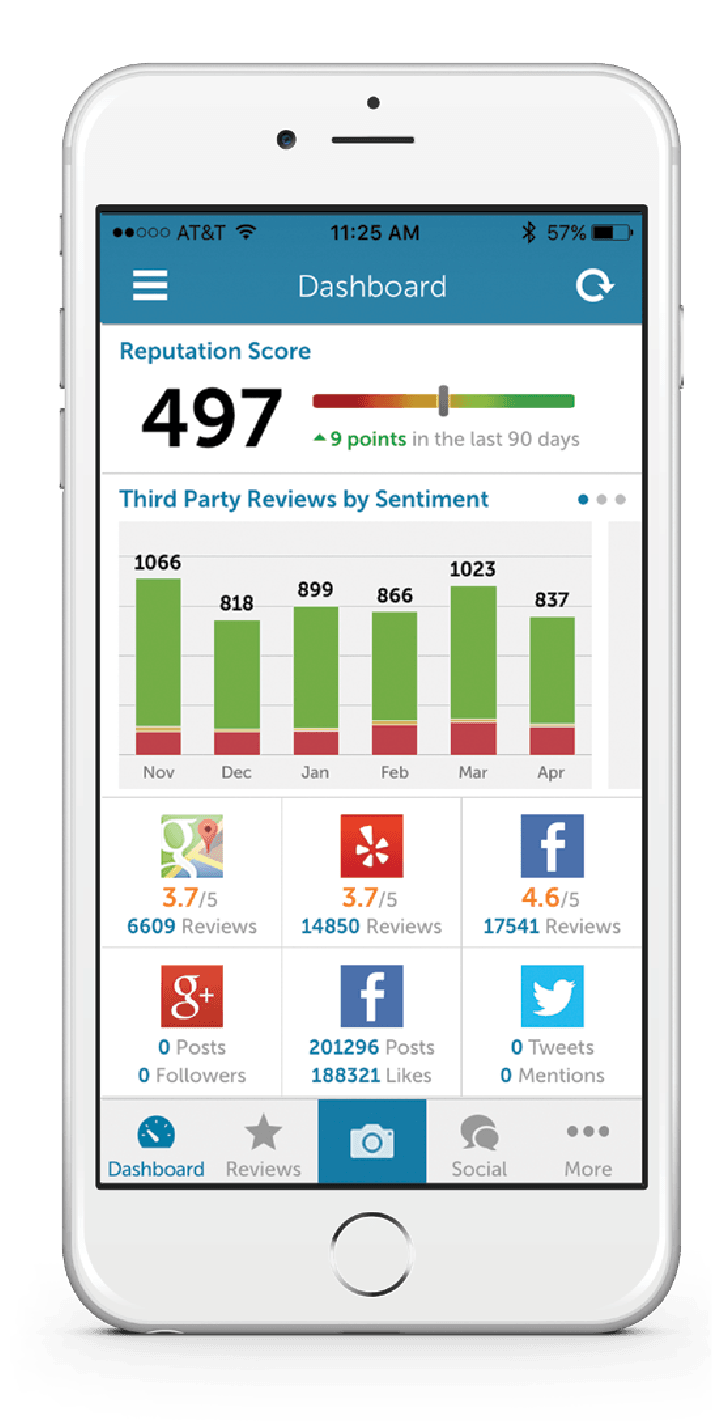10 Do’s and Don’ts for Developing a Solid Review Requesting System
Reputation Staff Writer

The healthcare referral system is in the middle of a paradigm shift. Today, more people are using online patient reviews — rather than word of mouth — to find their next healthcare provider.
In fact, nearly 80 percent of patients use online review as a first step in finding a new physician, according to research cited in Reputation.com’s guide, titled: “5 Steps to 5 Stars: How to Get Great Online Patient Reviews.”
Online endorsements play a critical role in your healthcare organization’s reputation and financial success.
However, it isn’t enough to deliver great patient experiences and outcomes. You must ask your patients to review you.
Nearly 80 percent of consumers use online patient reviews to select healthcare providers.
~ Pew Research
Here are 10 do’s and don’ts to help you develop a system for generating and moniews:

1 Do: Claim and complete your review profiles
 There are many healthcare-specific review sites where patients go to get information, such as Google My Business, Facebook, Healthgrades, and Vitals.
There are many healthcare-specific review sites where patients go to get information, such as Google My Business, Facebook, Healthgrades, and Vitals.
Claim your listings on as many of these sites as possible. Make sure all information is accurate and consistent across all sites and edit your listings to include a brief business profile, photos, office hours, lists of services and other extras.
2 Do: Make it a routine to ask all of your patients to leave an online review that accurately reflects their service experience.
Ask past patients to submit an online review that speaks to their service experience.
The most trusted reviews are the ones that provide details. Both patients and search engines want to see you’ve earned accolades for your service and care over a period of time.
3 Do: Make your review request personal
 However you request reviews — by snail mail, email or in posters on your waiting room walls, let your patients know that you value their honest feedback. This review will ultimately help you improve your services and care.
However you request reviews — by snail mail, email or in posters on your waiting room walls, let your patients know that you value their honest feedback. This review will ultimately help you improve your services and care.
4 Do: Monitor your reviews
Patient reviews tell you a lot about what patients think about the quality of your service.  Without continual and thorough monitoring, you’re left with a serious blind spot. You can mine this wealth of patient experience data to uncover and address recurring quality of care, parking, personnel, food or pharmacy issues, to name a few.
Without continual and thorough monitoring, you’re left with a serious blind spot. You can mine this wealth of patient experience data to uncover and address recurring quality of care, parking, personnel, food or pharmacy issues, to name a few.
5 Do: Mention reviews in your patient-facing materials
 Add those positive reviews to your own website and social media pages. Link reviews back to their original sources. Loyal patients who read these reviews may be inspired to add their own. Post reviews on wall posters or table cards in your waiting rooms. You can also position computer tablets in your reception area to collect new reviews.
Add those positive reviews to your own website and social media pages. Link reviews back to their original sources. Loyal patients who read these reviews may be inspired to add their own. Post reviews on wall posters or table cards in your waiting rooms. You can also position computer tablets in your reception area to collect new reviews.
6 Don’t: Send out review requests all at once
 It’s important to generate patient reviews on a scalable and scheduled basis, not all at once. The power of reviews is cumulative.
It’s important to generate patient reviews on a scalable and scheduled basis, not all at once. The power of reviews is cumulative.
7 Don’t: Solicit or publish fake reviews
 Never offer your patients an incentive to write a review or create testimonials. This is unethical and could potentially drive away patients. In fact, review sites are becoming more savvy about false reviews and may remove them.
Never offer your patients an incentive to write a review or create testimonials. This is unethical and could potentially drive away patients. In fact, review sites are becoming more savvy about false reviews and may remove them.
8 Don’t: Ask disgruntled patients to review your organization until you’ve resolved their issues
If a negative review has been submitted by a patient, then work with your risk assessment manager to resolve the issues, within HIPAA regulations. Once the issue is resolved, the patient may change their review to reflect how you worked together to address the issue
9 Don’t: Ignore negative reviews
Negative reviews can put your reputation on the line. But you can control the outcome. Your best defense is a good response.
Patients want to see how you handle the situation when things go wrong. If appropriate, offer to handle the issue offline.
10 Don’t: Try to remove negative reviews
 If you can’t resolve a patient’s issue and turn a negative review into a positive one, let it go.
If you can’t resolve a patient’s issue and turn a negative review into a positive one, let it go.
 Attempting to remove a negative review can aggravate the situation and lead to additional negative comments. Focus instead on building a wealth of positive reviews.
Attempting to remove a negative review can aggravate the situation and lead to additional negative comments. Focus instead on building a wealth of positive reviews.
For more information on developing a robust patient review generation and monitoring program, download our White Paper, “The Best Practices for Review Requesting.”
